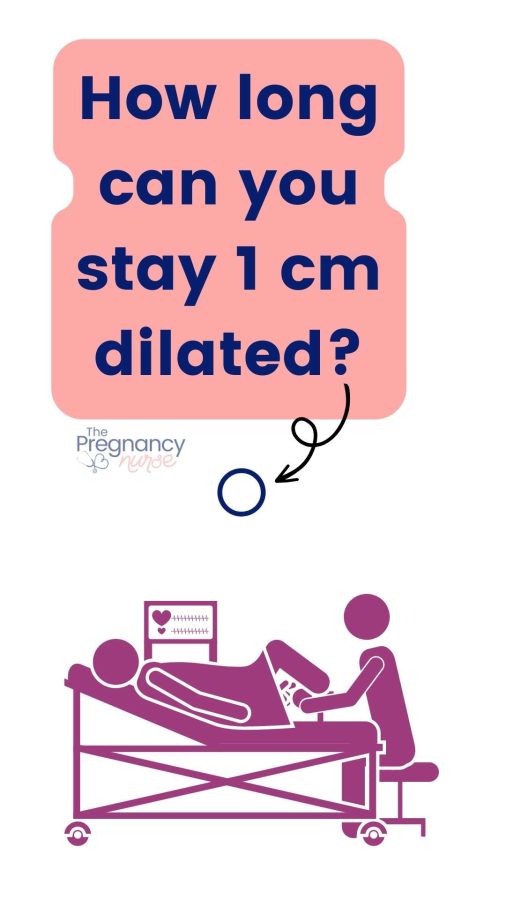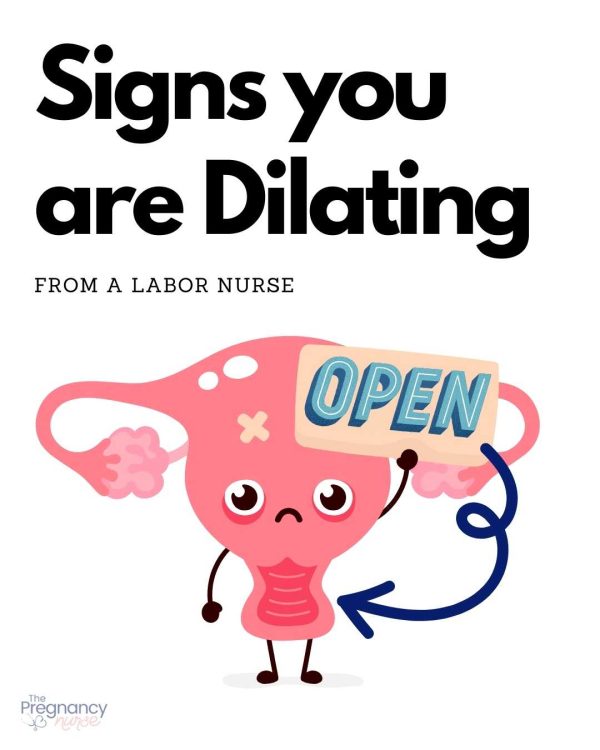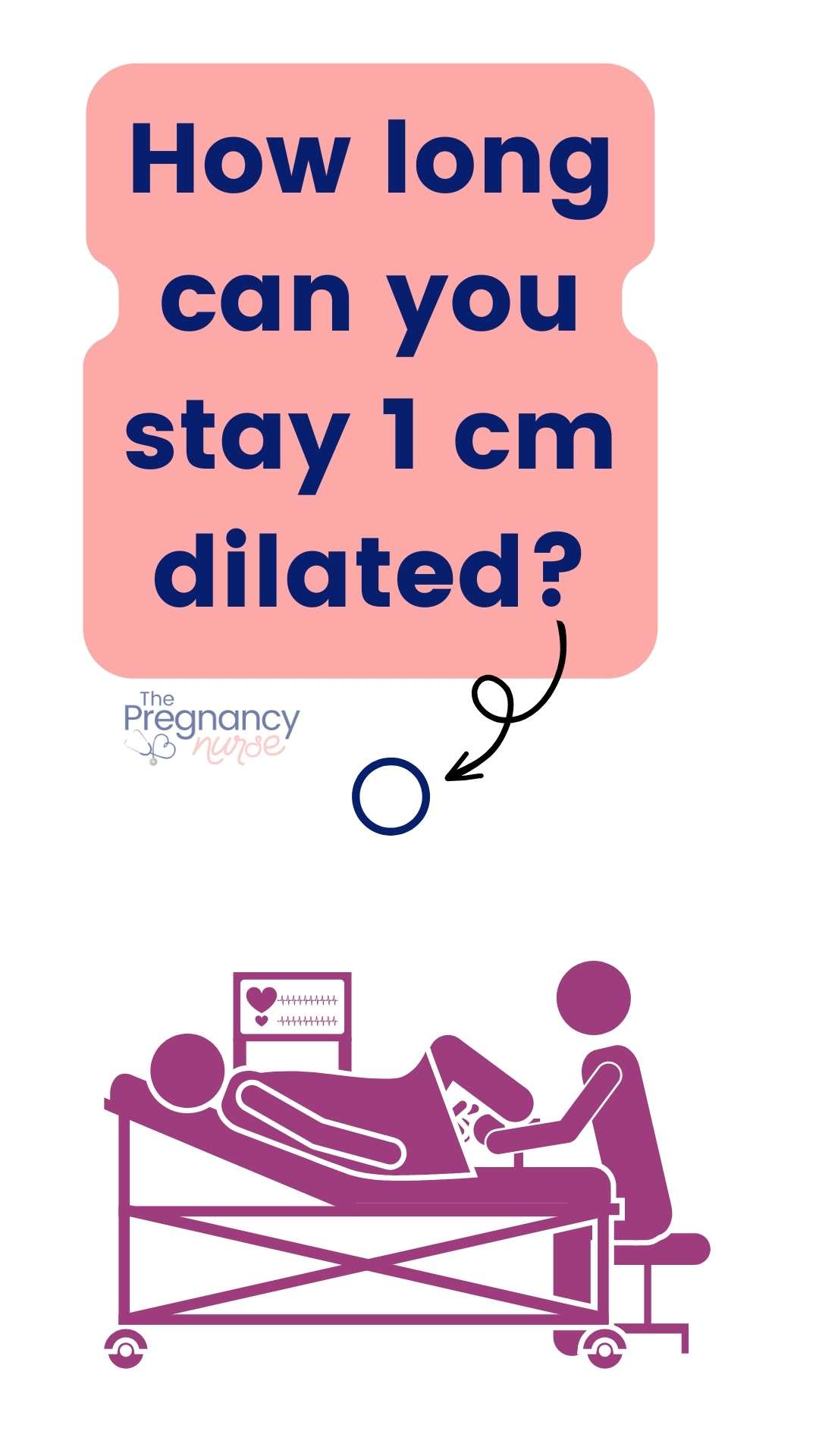Are you pregnant and curious about how long you might stay 1cm dilated? As a soon-to-be mom, it’s important to be familiar with the progress of labor so that you can make the best plan for your delivery. While every pregnancy is different, understanding what typically happens during labor can help you feel more prepared for when the big day comes.
In this blog post, we’ll discuss some common questions about 1cm dilation and what to expect as your labor progresses. So get comfortable and ready to learn — let’s dive in!

If you’re wondering about dilation, I just want to be sure you’ve working on (or have finished) a birth class. I recommend this one.
How long can you stay 1cm dilated?
Sadly, you can be dilated for a long time, it may be weeks before your have your baby. In fact, if you had a previous pregnancy not too many months before getting pregnant, there’s a chance your cervix never fully closed. It may be days or weeks until you have your baby. In reality, just knowing you are 1 cm doesn’t tell us a whole lot about what’s going on.
Nope, cervical dilation is not the crystal ball we all hope it will be. Sorry to be the bearer of bad news on that. But, let’s keep talking about what this all means for you!
Dilation is hard to measure, but there ARE other signs of labor to watch out for — so grab my signs of labor checklist:
What causes you to dilate?
Dilation typically occurs as a result of your baby’s head pressing against a softened cervix. As the cervix stretches and thins out, it begins to open up. This is called effacement.
Your baby doesn’t make it dilate prior to now because:
- The baby wasn’t big enough to put enough pressure on the cervix
- Your cervix remains hard until your body excretes hormones telling it to soften
- The bones of your pelvis didn’t allow baby’s head to engage in the pelvis, hormones will tell your pelvis to loosen up a bit to get that baby out!
I have a whole post on the signs of dilation if you want more info on it.

What does 1-cm dilated mean?
I means that your opening of the cervix is 1 cm.
This is measured by your provider using their hand to feel the cervix. They place their finger(s) in the cervical opening and open them to tell how dilated you are.
But just 1 cm doesn’t tell the whole story….
What do the other things in a vaginal exam mean?
A vaginal exam is made up of a few different components (your doctor may only tell you how many cm dilated you are, but they know these other things too after they check your cervix — and good practitioners always chart these):
Dilation: As we’ve already discussed this is a measurement of the cervical opening.
It is important to remember that these aren’t exactly precise measurements as they aren’t taking a ruler into measure. It comes by checking a LOT of cervixes (and a lot of practice) to know what is what. Checking dilation of the cervix is a skill that takes a while to learn, and often it varies by a centimeter or two between practitioners.
Why centimeters? Most medical stuff is done in mm or cm…. just makes it standard no matter what country you practice in.
Want to know more about dilation — check out these posts:
- How to Dilate Faster
- What Cervix Dilation Should You Be at 36 Weeks of Pregnancy?
- How Dilated Are You When You Lose Your Mucus Plug?
Effacement: This is how thin or thick your cervix is.
Your cervix is actually the end of your uterus. Similar to how your rectum is the end of your intestines. The average length of a cervix is 4-5 cm, but it will thin out to paper thin before baby is born. I like to think of it as pushing your head through a tight sweater neck. As your head pushes through it, the knitting will thin out and make it easier to get on. So, if your cervix is 1 cm but your cervix is still very thick, it obviously doesn’t mean as much.
This is measured in % — and while we don’t exactly know what your cervix was before you were pregnant, we have a basic idea of what’s going on. However, anything less than about 70% is still pretty darn thick.
Want to know more about effacement — check out these posts:
- What is an “Unfavorable Cervix”? What does it mean for your labor?
- What do the Cervical Exam Numbers Mean?
Station: This is where the baby is engaged into your pelvis. We measure it against your ischial spines.
It is measured against those spines with negative 3, 2 or 1 being above the spines, and positive 1, 2 3, or 4 being above it. Soemtimes we just report it as “high” — meaning that the baby isn’t into the pelvis much. It can also be called ballotable — meaning when you push on the baby’s head they bonce up and the head isn’t engaged into the pelvis at all.
So, if you’re 1 cm but the baby is still high up out of your pelvis it doesn’t mean a whole lot.
While not always reported, there are a couple of other things that are important to your healthcare provider who checks your cervix:
Want to know more about station — check out these posts:
Cervical position: most people’s cervix starts further back in the vaginal vault. That means they have to reach further back to check it (and that can be more painful). Once the baby progresses further into labor the cervix tends to move forward placing baby further into the birth canal (and also making the exams easier and less painful, if that helps you at all).
This is usually annotated by anterior, mid-position or posterior cervix.
Cervical consistency: Just how your cervix feels. Is it soft like butter, or is it hard like rubber. A cervix that is still hard is very different that one is soft and may have some stretch to it.
This is normally just verbally said as soft, or hard… of some adjective along those lines.
So, 1 cm dilated, 90% effaced, and 0 station is very different than 1 cm dilated, cervix is still thick and baby is -2 station, it’s hard and posterior. You need to take the whole picture into mind.
Pro Tip: Just because your cervix is something now doesn’t mean that it can’t be something else in a few days (or even a few hours). Labor can start and any time…
Many want to know how many centimeters are you when labor begins — but it’s complicated, so let’s talk about the process your body normally goes through in labor…
Want to know more about cervical exams — check out these posts:
- Painful Cervical Checks During Pregnancy: What to do if you’re scared.
- Pain After Your Cervical Check: What’s it mean?
- Cervical Checks During Pregnancy: Is it worse than labor?
- Refusing Cervical Checks in Pregnancy
Signs of Being 1cm Dilated
Honestly, not really too many signs. Some people may be 1 cm for much of pregnancy — so it isn’t particularly something you can know without an exam.
Once you’ve given birth your cervix begins to shrink back down — but we never know if it actually closes…
What are the stages of dilation?
These would go along with the stages of labor. They aren’t “cut and dry” points — but it should give you an idea of what to expect.
The first stage of labor is called early labor, or latent labor. Up to 4’ish cm is considered early labor (although some practitioners are saying 1-6 cm is early labor).
These centimeters tend to go slower. Labor may stop and start a bit and things aren’t in as much of a pattern overall. Even though you may be 1 cm you really wouldn’t be considered in “early labor” until you are having frequent contractions, at least a few every hour… prior to that your cervix is just softening and opening a bit.
4-10 cm is considered active labor. However, active labor is when your cervix is ACTIVELY dilating. Meaning if we check you now, and then again in an hour it should be different. That difference can be any of the variables in that vaginal exam. The cervix has opened, effaced or baby is lower in the birth canal.
The crazy thing is that even if you’re 5 cm it doesn’t mean that labor is imminent. I walked around at 5 cm for over a week without regular contractions. Your cervix will dilate and start to open when it’s darn well ready to {annoying, right}.
After 10 cm the cervix disappears behind baby’s head and it is time to push. At this point your cervix if fully dilated.
Pro tip: Don’t forget about pushing! Average pushing time on a first baby is usually about 2 hours. For people who’ve already had a vaginal delivery the amount of pushing is normally much less (depending on the size of the baby and their position).
Understanding how labor progresses for your body, and also what to expect at the hospital is SO important. I honestly think that taking a birth class to learn about it is the bare minimum. Be SURE that you’re getting it in!
Looking to get prepare for your birth? I have some easy options for you!
~~~~~~~~
– Worried you’re missing something? Grab my pregnancy planner so you don’t miss a thing!
– Thinking about an induction? Grab Inductions Made Easy to feel prepared in just 20 minutes!
– Wondering how to get that baby OUT? Grab Going Into Labor Made Easy so you know how to (and not to) do it!
– Postpartum got you anxious? Check out Postpartum Care Made Easy so you can stay SAFE even when all your attention is on that little on.
🚨 AND if ALL OF IT has got you on edge The Online Prenatal Class for Couples is perfect for you — You’ll feel so ready before you even know it!
~~~~~~~~
No matter WHERE you are at in your pregnancy journey, we have resources that can help!
Questions to ask my provider if I am 1 cm?
If you are 1 cm, it is important to ask your provider what else is going on — the effacement, station, etc.
Ask them if it feels like baby has dropped into your pelvis.
Also, if they feel like it is safe for you to have your baby at this point. This is normally based on how close you are to your due date — being 1 cm dilated at 28 weeks is very different than being 1 cm dilated at 40 weeks.
Either way, if your provider says that you are 1-cm dilated it is definitely time to start (or continue) to prepare for labor. Time to consider that hospital bag, and make sure you’ve finished (or are finishing) your prenatal class.
Is it OK to be 1 cm dilated before 37 weeks?
If you are feeling contractions before baby is ready to be born (for most providers this is before 35’ish weeks — if it’s after that often they will just let you go on to have the baby) they will do a test called fetal fibronectin.
This test looks for the “fibronectin” in your vagina. That is a substance that is released when your cervix is actively being opened. The test is reported as either positive (there is fibronectin) or negative (none was found). It is done using a fancy Q-tip placed in your vagina and then sent to the lab.
If it is positive it shows that your cervix is actively dilating and you may be going into preterm labor.
If you’re too early to have your baby with a positive fetal fibronectin, they will often give you medications to stop the contractions, and may put you on bedrest.
If it is negative it shows your cervix is not actively dilating and the contractions you are feeling aren’t really doing anything. Often these are considered Braxton Hicks contractions, false labor or some people call them “practice contractions”
Fun fact, the fibronectin test has to be done before you have a vaginal exam, and can’t be done if you’ve had penetrative sex in the last 24 hours (or are bleeding a lot). So, normally we’ll do the Q-tip test and then check your cervix to see if it’d dilating.
What are some other signs of labor to watch for?
Great question, labor doesn’t normally come with just cervical dilation — you may also see:
- Painful labor contractions, usually in a pattern – like having regular contractions every 3 minutess
- You may have tummy upset or nausea
- You may also lose your mucus plug
This is beyond the scope of this article, but I have a whole mini class on the signs of labor.
I also have a full video on this topic:
When should I go to the hospital?
Definitely a great question to ask your provider. Most hospitals don’t want to admit you until you are 3 cm or start to dilate actively (so, you’d go from 1 cm to 2 cm in an hour or something long those lines).
But, when you should go to the hospital REALLY varies per person (and frankly, per hospital) so be sure to have that talk with your provider early in your 3rd trimester, and at each prenatal visit).
I have a whole post on when you should head to the hospital that is pretty helpful.
What are some ways to induce labor?
Many of you guys came to this article after a vaginal exam after baby is good to be born and you’re hoping that 1 cm will get that baby out soon — I sure do know that feeling (I was 12 days over with my last baby)…
I actually have a quick little guide with my best tips on going into labor. In it I share:
- How your body decides to go into labor
- What to eat to get into labor
- What to DO to go into labor
- And what to do at home during those early labor hours
You can get it right here, or it’s included in my bump to bassinet bundle.
If you haven’t taken a prenatal class, this is your best option to get your brain ready to have this baby (because, as you’ll learn in there, your brain definitely plays a part in this process, and if you’re worried about labor it can slow things down).
You may feel like you’re too late — but I can’t stress it any more that you have TIME to get that class in, and you’ll be much happier with your birth if you get one in.
I love what Kelly had to say a few days ago:
This course helped me feel a lot more at ease about what to expect. It’s broken into short sessions which makes it’s easier for me to stay focused. So glad a found it! PS: I found this class via YouTube video on how a catheter is inserted.
⭐⭐⭐⭐⭐
And, if you’re not quite sure you’re ready for that whole thing, check out my free prenatal class. It’s your first step toward getting in the driver’s seat of your birth.
Don’t miss my super helpful post all about the signs of labor. Great info for pregnancy!







 How to Induce Labor at 2 Cm Dilated?
How to Induce Labor at 2 Cm Dilated?
